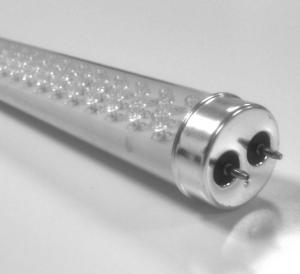
Colleges and Universities around the country are looking for ways to 'Go Green'. From installing solar arrays on buildings, commissioning new LEED rated buildings, to investing in fuel cells, finding the next big money saving green technology is what it's about. Although there are numerous ways to go green it's important to remember that sometimes saving energy is literally as easy as changing a light bulb.
Retrofitting a fluorescent lighting system to LED technology is one of the easiest ways to 'Go Green' and it could be the answer that many colleges and universities that are a part of the American College and University Presidents Climate Commitment (ACUPCC) are looking for.
The ACUPCC began in 2006 as a way for higher education institutions to voluntarily unite and take action against climate change on their respective campuses. Presidents and Chancellors of Universities and Colleges from all over the country that have signed this commitment agree to:
·Complete an emission inventory
·Within two years, set a target date and interim milestones for becoming climate neutral
·Take immediate steps to reduce greenhouse gas emission by choosing from a list of short-term actions
·Integrate sustainability into the curriculum and make it part of the educational experience
·Make the action plan, inventory and progress reports publicly available
As stated beautifully on their website “college and university presidents and chancellors who are joining and leading the Commitment believe that exerting leadership in addressing climate disruption is an integral part of the mission of higher education and will stabilize and reduce their long-term energy costs, attract excellent students and faculty, attract new sources of funding, and increase the support of alumni, business and local communities.”
Considering that some of these universities and colleges were founded more than a century ago – and have every intention of being around for the next century – making sustainable changes to the campus to reduce energy consumption and operating costs is a no brainer. Retrofitting campus HVAC systems and facilities is an important move, but so is changing the light bulbs.
On average, lighting typically accounts for 22% to 30% of commercial energy consumption. Every $100,000 spent on electricity generally translates into approximately $22,000 to $30,000 spent on lighting. Considering the number of classrooms, stair towers, offices, parking garages and support facilities each university or college owns, switching to LEDs would have an immediate impact by lowering their energy consumption, thereby reducing their operating costs.
Although the majority of the bulbs have yet to begin being manufactured domestically, LEDs are by far the most sustainable light choice as they consume 50%-80% less energy, can last 2-3 times longer than fluorescents, and do not contain any mercury. In addition, many companies currently offer LED fixtures with a life cycle of upwards of 10 years or more that can often produce better light quality – lumens for lumens –than the existing fluorescent tubes.
As the green technology field continues to make solar panels, fuel cells, and cellulose based fuel more efficient we should remember that some sustainability moves really can be as easy as changing a light bulb. Just as Edison's incandescent bulb dominated lighting for the past 100 years, there's a good chance that LEDs will dominate lighting for decades to come.

